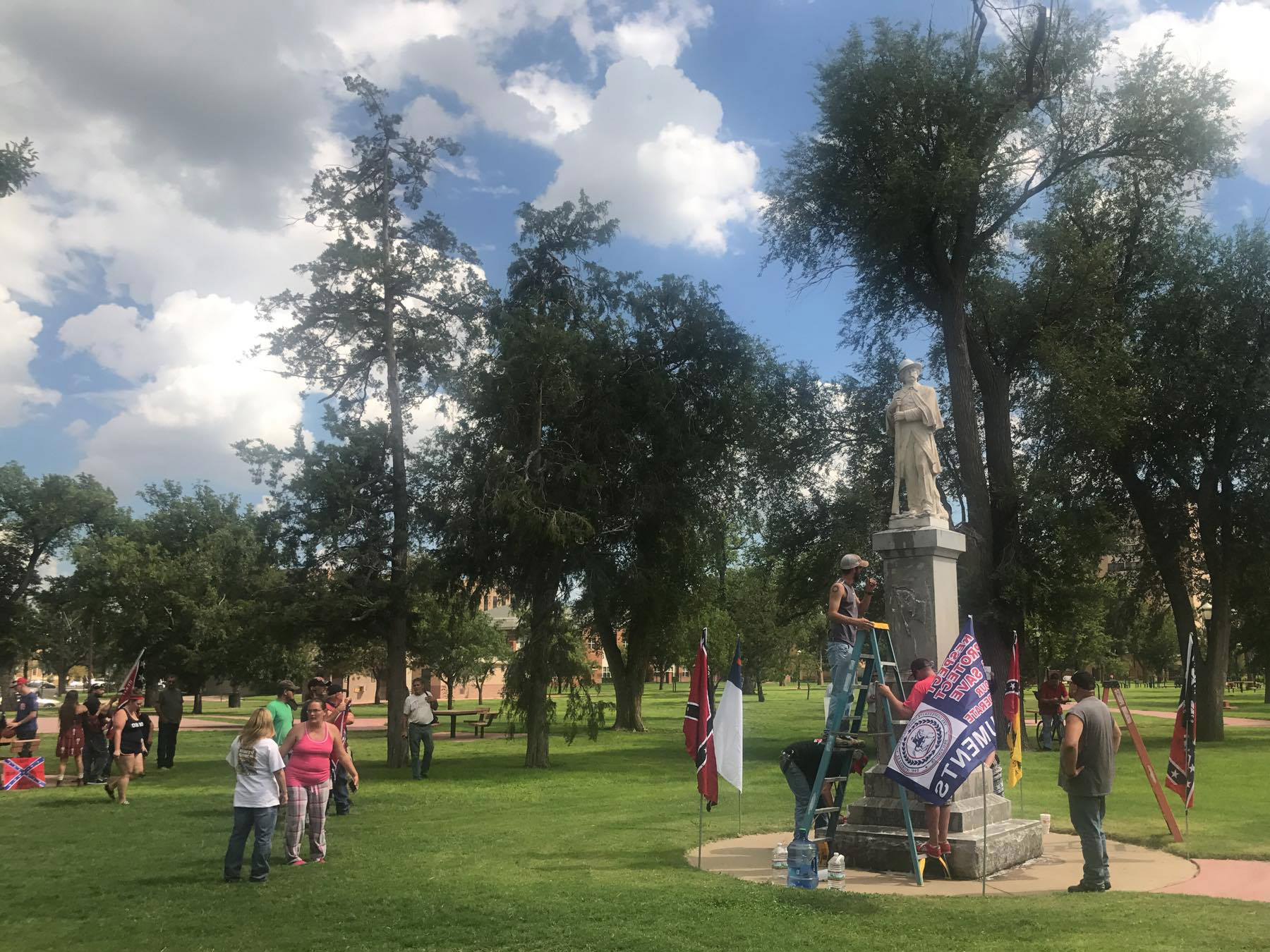
While Confederate Monuments Fall in Texas’ Big Cities, Others Take a Slower Pace
Several Confederate monuments in Texas' metropolitan areas have been removed since Charlottesville, but Amarillo officials have been slow to act.

A version of this story ran in the October 2017 issue.

For some Texas cities, the white supremacist violence in Charlottesville, Virginia, fueled what were otherwise painstakingly slow efforts to purge public symbols honoring the Confederacy.
A week after Charlottesville, statues of Confederate generals and cabinet members disappeared from their perches across the University of Texas at Austin campus in the dark of night. The following week, San Antonio’s North East Independent School District board stripped Robert E. Lee’s name from a high school. Soon after, the San Antonio City Council voted to remove the city’s most prominent Confederate marker. Masked workers under police escort brought in cranes the night after the vote to pluck the granite soldier from his pedestal over a downtown park, where he’s loomed for 118 years. This month, Dallas leaders removed a bronze statue of Lee on horseback from his namesake park. And last week, Texas House Speaker Joe Straus called for the removal of a plaque erected during the Civil Rights Era that tells Capitol visitors the Civil War “was not a rebellion, nor was its underlying cause to sustain slavery.”
According to the Southern Poverty Law Center, Texas has at least 180 public symbols that honor the Confederacy — more than any other state besides Virginia. As the statues fall, so will that number.
But they’re likely to remain standing, at least for now, in places like Amarillo. Days after Charlottesville, Indivisible Amarillo launched a petition urging local leaders to remove a marble statue erected by the United Daughters of the Confederacy during the Jim Crow era in a park just south of the city’s historically black North Heights neighborhood.
They weren’t the only ones moved to action. About a dozen people vowing to protect what they said was their “heritage” showed up at the park on August 20 with ladders, buckets and brushes to clean the statue. They were organized by James Roberts, who leads a group called the Amarillo Freedom Riders. Instead of pushing for desegregation, as their civil rights-themed name would imply, the Amarillo Freedom Riders have counter-protested rallies against police brutality, waving thin-blue-line flags and wearing “White Lives Matter” T-shirts. For the past three Julys, the group has waved Confederate flags around town for its annual “Fly Your Flag” rally. Less than a month after Roberts and his Freedom Riders scrubbed it clean, someone vandalized the Confederate monument with red spray paint, according to the Amarillo Globe-News. (Roberts didn’t respond to voicemails and other messages from the Observer.)
By the time Indivisible Amarillo and representatives of the local NAACP brought their petition, signed by 830 people, to a standing-room-only City Council meeting on August 22, Roberts and his Freedom Riders had gathered more than 5,000 signatures on a petition to “Leave All Monuments Alone.” Jerri Glover, the Indivisible Amarillo member who launched the drive to take the statue down, says the city’s mayor and council members have avoided the subject.
“Frankly, our city council’s been silent on the issue,” she told the Observer, “like they think it’ll all blow over.”
That hasn’t stopped the conversation happening in Amarillo. At a September 18 Amarillo ISD board meeting, David Lovejoy, vice president of the local NAACP chapter, urged trustees to rename the district’s Robert E. Lee Elementary School. He mentioned his 106-year-old grandmother, who recently died, and how he could “see the fear, dread or helplessness in her eyes whenever these symbols were in her presence.”
“While some will argue that these names, flags and statues are part of history referencing the Civil War, for me and others it calls to a more recent history: the era of Jim Crow, when these symbols and names were applied in the ‘20s, ‘30s, ‘40s and ‘50s,” Lovejoy told the board. “And it sends a clear and loud message: Nigger know your place.”
Meanwhile, Mildred Barton, a longtime resident of the North Heights neighborhood, can think of plenty of options for the Amarillo’s Confederate monument. “If you leave it up, you’ve gotta put something else there, because it’s incomplete,” she told the Observer. “It’s only showing one side of history.” Maybe, she mused, a monument that explains the treatment of slaves under the Confederacy.
“You could even put a statue of Harriet Tubman or Frederick Douglass right next to it,” Barton said.
This article appears in the October 2017 issue of the Texas Observer. Read more from the issue or become a member now to see our reporting before it’s published online.



